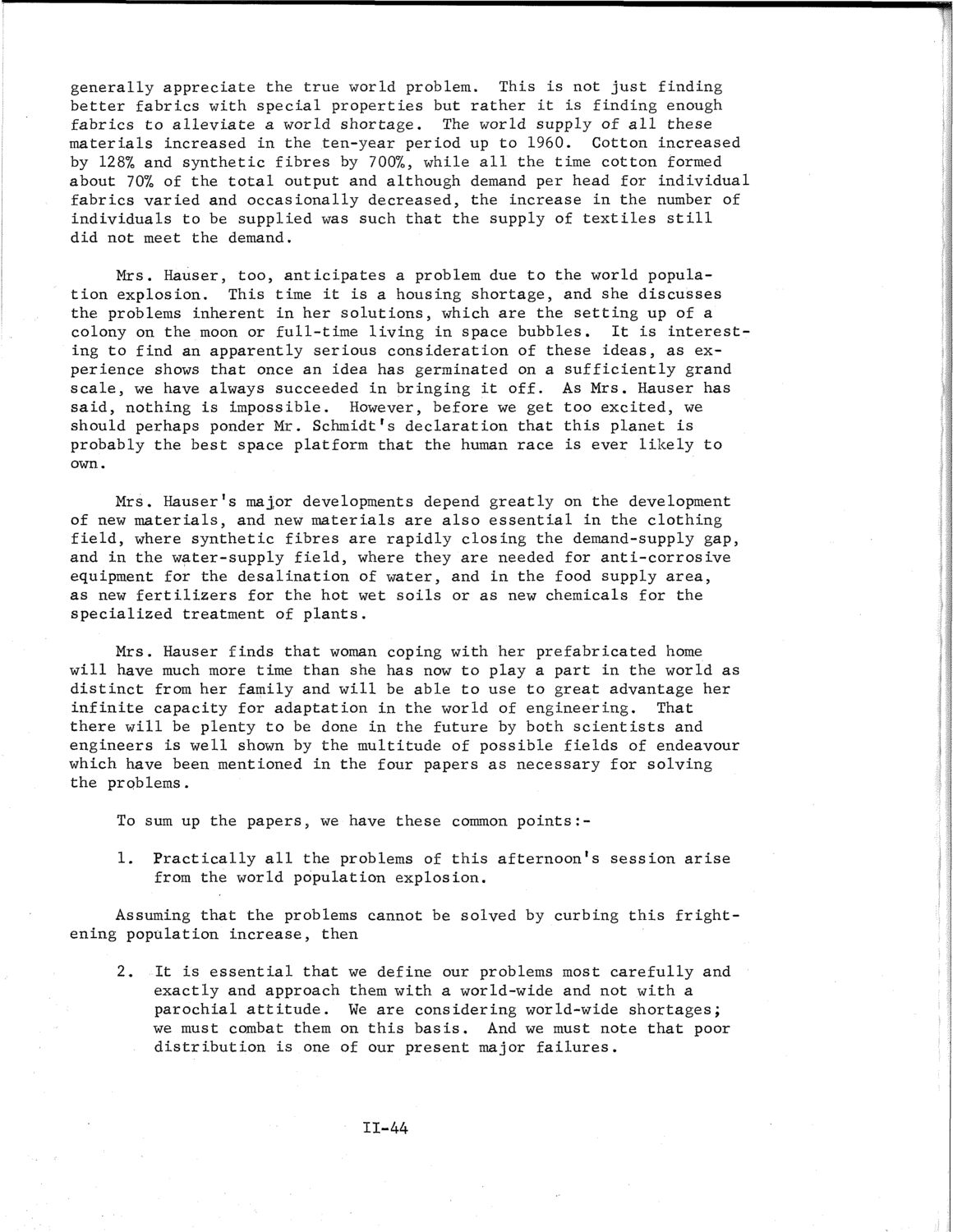| |
| |
Caption: SWE - Proceedings of the First International Conference of Women Engineers and Scientists
This is a reduced-resolution page image for fast online browsing.

EXTRACTED TEXT FROM PAGE:
generally appreciate the true world problem. This is not just finding better fabrics with special properties but rather it is finding enough fabrics to alleviate a world shortage. The world supply of all these materials increased in the ten-year period up to 1960. Cotton increased by 128% and synthetic fibres by 700%, while all the time cotton formed about 70% of the total output and although demand per head for individual fabrics varied and occasionally decreased, the increase in the number of individuals to be supplied was such that the supply of textiles still did not meet the demand. Mrs. Hauser, too, anticipates a problem due to the world population explosion. This time it is a housing shortage, and she discusses the problems inherent in her solutions, which are the setting up of a colony on the moon or full-time living in space bubbles. It is interesting to find an apparently serious consideration of these ideas, as experience shows that once an idea has germinated on a sufficiently grand scale, we have always succeeded in bringing it off. As Mrs. Hauser has said, nothing is impossible. However, before we get too excited, we should perhaps ponder Mr. Schmidt's declaration that this planet is probably the best space platform that the human race is ever likely to own. Mrs. Hauser's major developments depend greatly on the development of new materials, and new materials are also essential in the clothing field, where synthetic fibres are rapidly closing the demand-supply gap, and in the water-supply field, where they are needed for anti-corrosive equipment for the desalination of water, and in the food supply area, as new fertilizers for the hot wet soils or as new chemicals for the specialized treatment of plants. Mrs. Hauser finds that woman coping with her prefabricated home will have much more time than she has now to play a part in the world as distinct from her family and will be able to use to great advantage her infinite capacity for adaptation in the world of engineering. That there will be plenty to be done in the future by both scientists and engineers is well shown by the multitude of possible fields of endeavour which have been mentioned in the four papers as necessary for solving the prpblems. To sum up the papers, we have these common points:1. Practically all the problems of this afternoon's session arise from the world population explosion. Assuming that the problems cannot be solved by curbing this frightening population increase, then 2. It is essential that we define our problems most carefully and exactly and approach them with a world-wide and not with a parochial attitude. We are considering world-wide shortages; we must combat them on this basis. And we must note that poor distribution is one of our present major failures. 11-44
| |